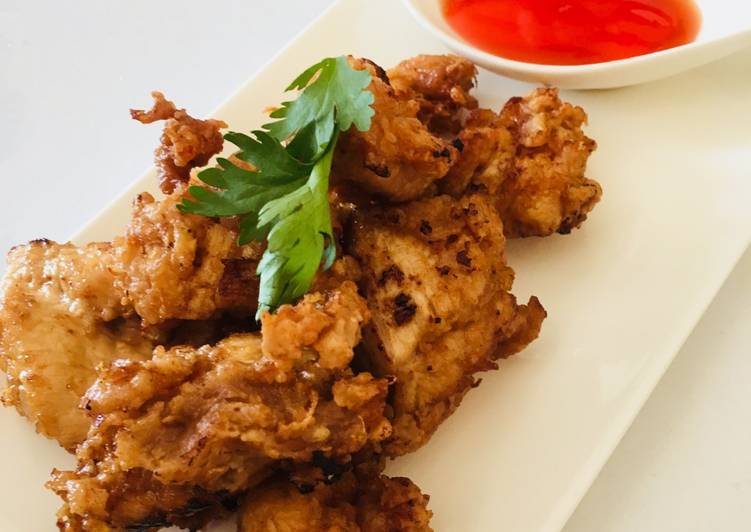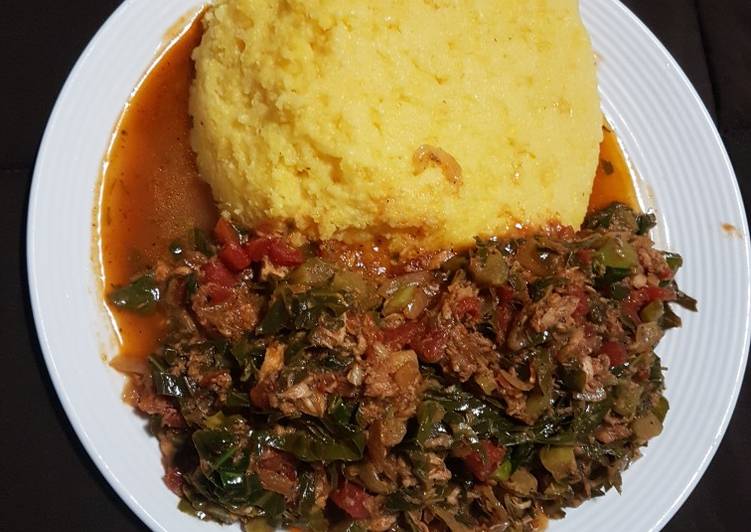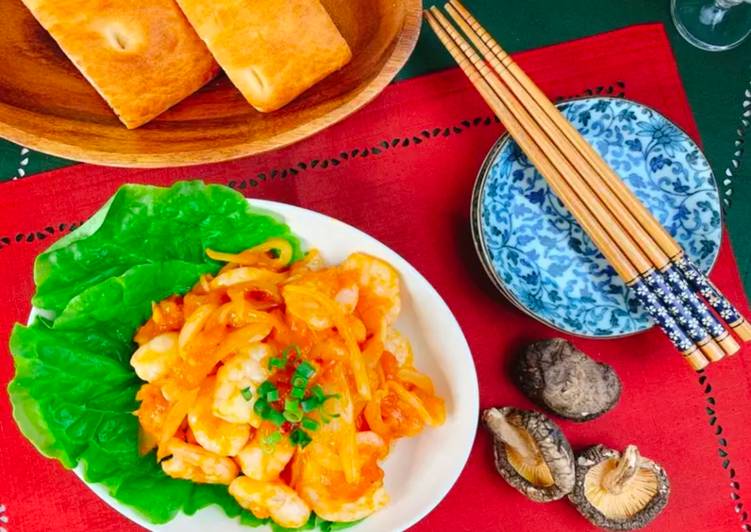
Hello everybody, it is Brad, welcome to our recipe site. Today, we’re going to prepare a distinctive dish, japanese chicken karaage (kenyan style). One of my favorites food recipes. This time, I’m gonna make it a little bit tasty. This is gonna smell and look delicious.
Japanese Chicken Karaage (Kenyan style) is one of the most favored of recent trending meals in the world. It is easy, it is fast, it tastes delicious. It’s enjoyed by millions daily. They’re nice and they look fantastic. Japanese Chicken Karaage (Kenyan style) is something that I have loved my entire life.
Karaage (Japanese fried chicken) is easily one of the greatest fried chickens in the world. Karaage is often served with a wedge of lemon and Japanese mayo (sprinkle Shichimi Some restaurants can be creative with their own style sauce but that's rather rare. With a crisp shell surrounding juicy chicken, Karaage (Japanese Fried Chicken), is a staple of Japanese home cooking and one of the most popular Chicken is the most common protein, but it's also made with seafood, such as blowfish.
To get started with this recipe, we must prepare a few ingredients. You can have japanese chicken karaage (kenyan style) using 13 ingredients and 6 steps. Here is how you cook that.
The ingredients needed to make Japanese Chicken Karaage (Kenyan style):
- Prepare 300 g chicken breast or thigh
- Take [to marinate]
- Make ready 3 tbs light soy sauce
- Get 1 tbs grained ginger
- Prepare 1 tbs chopped garlic
- Prepare 1 tbs sesame oil
- Take pinch salt and white pepper
- Get 1 and half tbs king fisher (or any kind of beer)
- Take (1 tbs sugar only when you use beer instead of king fisher)
- Get [to fry]
- Make ready 3 tbs corn flour
- Take 3 tbs all purpose flour
- Prepare vegetable oil
All it takes is a little marinating time and then frying it up. Corn starch gives Chicken Karaage a light crispy outside without the over-breading that can sometimes happen with regular flour. Karaage (唐揚げ 空揚げ or から揚げ, [kaɾaaɡe]) is a Japanese cooking technique in which various foods—most often chicken, but also other meat and fish—are deep fried in oil. To approximate the best Japanese chicken — meatier, fattier, and more flavorful than American supermarket meat — buy your chicken from a farmers' market, and debone it yourself or ask a butcher.
Steps to make Japanese Chicken Karaage (Kenyan style):
- Cut the chicken in a small cube and marinate them with soy sauce, ginger, garlic, sesame oil, salt and pepper and king fisher in a bowl. Cover the bowl and refrigerate for at least 1 hour.
- (After 1 hour) Dust the chicken with 2 types of flour.
- Add vegetable oil to a heavy bottomed pot and heat until the oil reaches around 180 degree. Test the temperature by dropping in some flour (if the flour doesn't sink, the oil is hot enough)
- Drop your chicken in the oil one by one. Fry in the oil until it becomes brown (at least for 5 mins). The oil should not become so hot.
- Remove your chicken and allow them to drain on a wire rack.
- Heat your oil until it reaches 200 degree and fry your chicken again for 1 min. Lift chicken from the oil and allow them to drain.
Don't feel pressure to do it perfectly: The pieces will be encrusted in a crisp coating. I used eat Karaage or something similar; once a week, when it was a regular lunch special, at the Sakura Japanese Restaurant, located in the Food Court at the Moorestown (NJ) Mall and I would make a dipping sauce with light soy sauce. All Reviews for Chicken Karaage (Japanese Fried Chicken). It's not exactly like real Japanese Karaage because it uses cornstarch but it definitely still comes out really yummy. I personally didn't have Japanese sake so when marinating the meat I just used soy sauce grated ginger and minced.
So that’s going to wrap this up for this special food japanese chicken karaage (kenyan style) recipe. Thank you very much for reading. I am confident you can make this at home. There’s gonna be interesting food at home recipes coming up. Remember to bookmark this page in your browser, and share it to your family, friends and colleague. Thanks again for reading. Go on get cooking!


